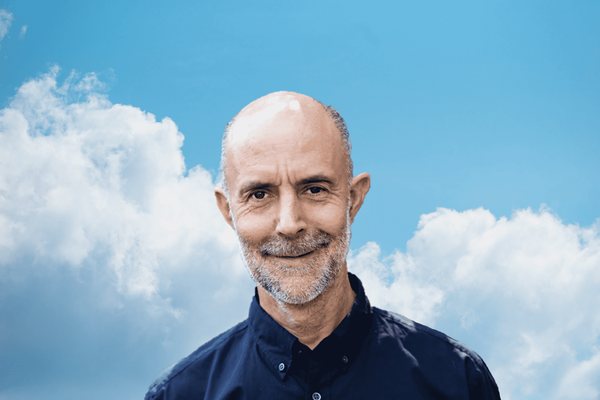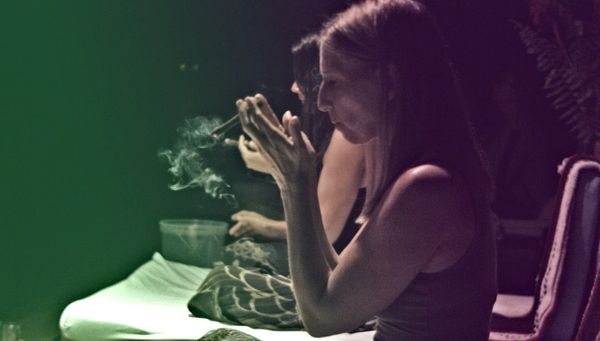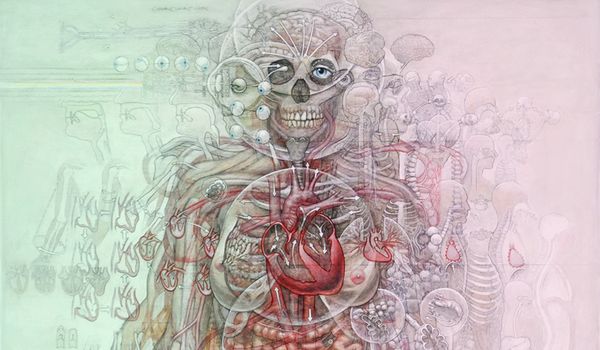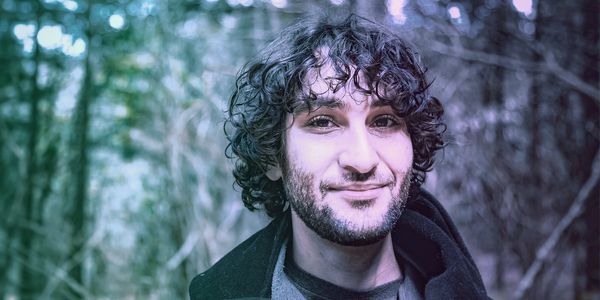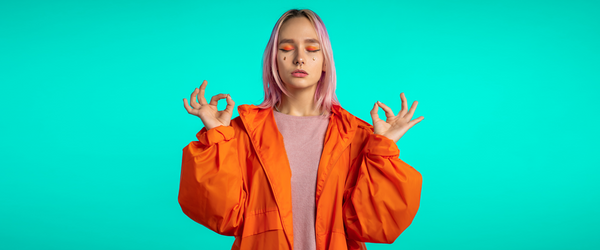Eric Brown • • 9 min read
Tea As a Path to Enlightenment: An Introduction to Cha Dao

“The good news is that I’m seldom surprised. The bad news is that I’m seldom surprised.”
— Michael Pollan
When did you lose your love of life?
Was it a particular moment? An event in your early years that forever dimmed the beauty of experience? Or did it happen gradually — a few missed opportunities, unfortunate circumstances, and recurring disappointments — slowly pulling the vitality out of existence.
Humans are adaptive machines.
This is a blessing and a curse.
We quickly adapt to any situation we are put in. This is why we are the only species that exists on every continent in the world. But it’s also a curse. No matter how great something is, if repeated over time, we adapt to it, and it’s no longer special.
We are living in the best time in recorded human history, and yet no one feels that way. Life has become unimpressive. Mundane. Expected.
Each moment a copy of the last. We chase novelty like donkeys with carrots dangling in front of us, hoping to shock our nervous system with so much newness that it kickstarts back into an appreciation of the present moment.
Our senses have dulled.
We have lost the appetite for nuance and subtlety. We put hot sauce on everything because our food tastes empty. We need constant action and explosions in movies because we have lost the enjoyment of the gradual unfolding and complexities of nuanced storylines. We travel to foreign cultures because we have lost our curiosity towards our own.
Our moments are mundane.
Our expectations are limitless, and reality rarely lives up to them. So we try to upgrade these as well. Escaping into some blend of a virtually-augmented, digitally-mediated ether, hoping that the eventual explosion of neurochemical collisions isn’t too far down the rabbit hole.
We reminisce of the simple days of childhood. Remember when we could play endlessly with a cup or a ball? Remember when the whole world was interesting and a source of amazement?
“Those were the days.”
Kids are so lucky. They get to have these experiences regularly.
Have we all collectively condemned ourselves to trivial lives? Filled with mundane experiences, bland conversation, and vapid entertainment?
I hope not.
In response to this, various modalities has risen up, fighting against the general neuroses of our time, as famed psychologist Carl Jung once put it. Psychedelics. Nomadic lifestyles. Rampant consumerism.
We seek something, anything, that will provide a burst of existential colour in our increasingly greyscale experience.
What if we could re-enchant our lives?
To fill the seemingly mundane moments with a richness and flavor that was once only the domain of children and the criminally insane?
What we need is a new mode of being.
A new orientation towards life, a remedy for the present ailments that we face. A mode of being that imbues each moment with richness and vitality and helps us find beauty in even the most basic of moments.
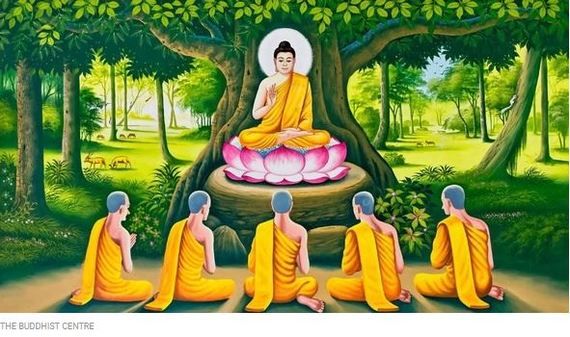
An Ancient Love Story
The paragraph above depicts a canonical rule of human experience: life is suffering.
For the initiated, you’ll recognize this as the first noble truth of Buddhism.
More specifically, the first noble truth is that desire leads to dukkha. Dukkha is roughly translated as dissatisfaction or discontent. In desiring something, we create a contract with ourselves to be unhappy until we get it. To be in a state of lack until the void is filled by something or someone.
Buddhism was born as a solution to remedy the problem of hedonic adaptation, our minds ability to quickly adapt to the situations that we find ourselves in. It provides a framework to reach the cessation of suffering and the cultivation of dhyana — the state of the meditative mind.
Dhyana is the meditative mind. What is the meditative mind? Simply put, the meditative mind is calm and awake.
Calm, and awake.
This is a mental state that is unperturbed by quick adaptation, one that is not in a state of lack. One that sees clearly the beauty and uniqueness of each moment.
As Buddhism spread throughout the East, it moved into China. In this translation, dhyana became chan.
As the new religion of Buddhism moved into China, it encountered the prominent religion of the time: Daoism. The successor of Confucianism, Daoism is another mode of being. It espouses the virtues and traits of the Dao, the great river of being in which all things come from and all things return to.
Both provide frameworks and orienting mechanisms to deal with the unfolding of life and assist in cultivating presence and awareness of the immediate moment.
As the Buddhist influence found its way into China and began to mix with Daoism, something new emerged from this.
A new existential framework was born from this ancient love story: Zen.
Zen comes from the Japanese interpretation/translation of the Chinese word chan, and it is from Japan that we get Zen as it is known and practiced today.
Taking notes from both Buddhism and Daoism, Zen provides a new, evolved framework — a new mode of being — heavily focused on the direct experience of reality and the cultivation of the meditative mind.
Zen has 4 core pillars:
- Direct, non-verbal transmission from teacher to student.
- No scripture, no dogma, no doctrine.
- It must address the heart of each individual.
- It must approach reality directly as it is.
Whereas Buddhism can be considered a religion, as it makes more use of scriptures, doctrines, and organized practice, Zen moves away from this in favour of direct experience and cultivated practice.
Zen is the meditative mind.
Zen is the direct experience and cultivation of the meditative mind.
Exploring Zen
The beauty of Zen is how heavily is prioritizes direct experience of the individual above everything else.
There is an ancient Zen parable of the finger pointing to the moon. The moon is the final experience or state that we want, the state of being/consciousness that is possible. The finger is the teaching, methods, or scriptures.
The finger can point the direction, it can be of assistance, but it is not the moon. It is not the direct experience of the Truth. We must never forget this.
Zen is often conveyed and practiced in forms outside of traditional study or practice. Though meditation is used, Zen practices also include koans, archery, flower arrangement, and martial arts.
All of these practices serve as vehicles to take us to our destination — the meditative mind. The clear seeing of reality as it is, and the appropriate disposition towards it.
But there is one Zen practice that is carried alongside Zen. Hand in hand.
They are, and remain, inseparable from one another. Cut from the same cloth, for they are the same practice.
This practice is tea.
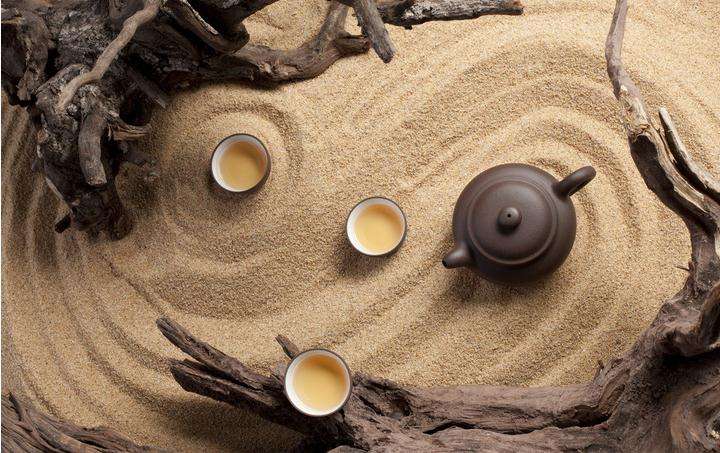
Cha Dao
It is here we find the concept of Cha Dao. Cha means tea. Dao refers to the Dao, the Great Way. Cha Dao is Tea as a Way. Tea as a mode of being.
Tea as a Way of Life.
Nearly everything we do is done (consciously or not) in an effort to reach dhyana, to attain the meditative mind. Why do you work for money? To feel secure — which makes you calm. Why do you consume certain media? To be entertained — focused, and awake.
At a fundamental level, all of our actions are done to achieve this state of the meditative mind. The conscious and consistent state of equanimity and alertness.
What we don’t realize is that we can skip all of the winding roads to get there and find techniques that lead us there directly.
Tea is one of these techniques.
Tea, and a ritualized, ceremonial process of its preparation and participation — provides all the constituent elements required to reach these states. To attain dhyana.
Tea is fundamentally simple.
Leaves, and water. It is a chance to commune directly with nature and sit and revel in its ancient wisdom. Tea is a plant medicine, one of the oldest herbal remedies we have. Healing for ourselves, our spirits, and the planet itself.
It is one of the oldest traditions known to civilization.
The practice has been defined and refined through the millennia, passed down from teacher to student in an unbroken chain since the very first bowl of tea was poured and consumed.
What makes tea particularly adept at cultivating Zen and the meditative mind is that it requires two fundamental components: presence, and as little ‘Self’ involvement as possible.
The more you can be present with the process, the more you can bring intention and awareness to your actions, the better your tea will be. Tea demands awareness of the here and now. In cultivating present moment awareness, you inch closer towards the meditative mind.
Second, and a bit more counterintuitive, it demands less of you. The more ‘you’ are involved in the process, the more it takes away from the tea. All that is needed for the perfect bowl is tea and Zen. We are simply a conduit to allow this to happen. As we reduce our own involvement in the process, the more we can steward the activity instead of control or force it — the more the tea responds and the better your service becomes.
Tea as a Way of Life has an additional element uniquely attuned to assist in this process: it is service-oriented. They say the easiest way to forget about your problems is to help someone else.
This is a perennial truth.
In dedicating ourselves to service, we gravitate naturally towards our meditative state: calm and awake.
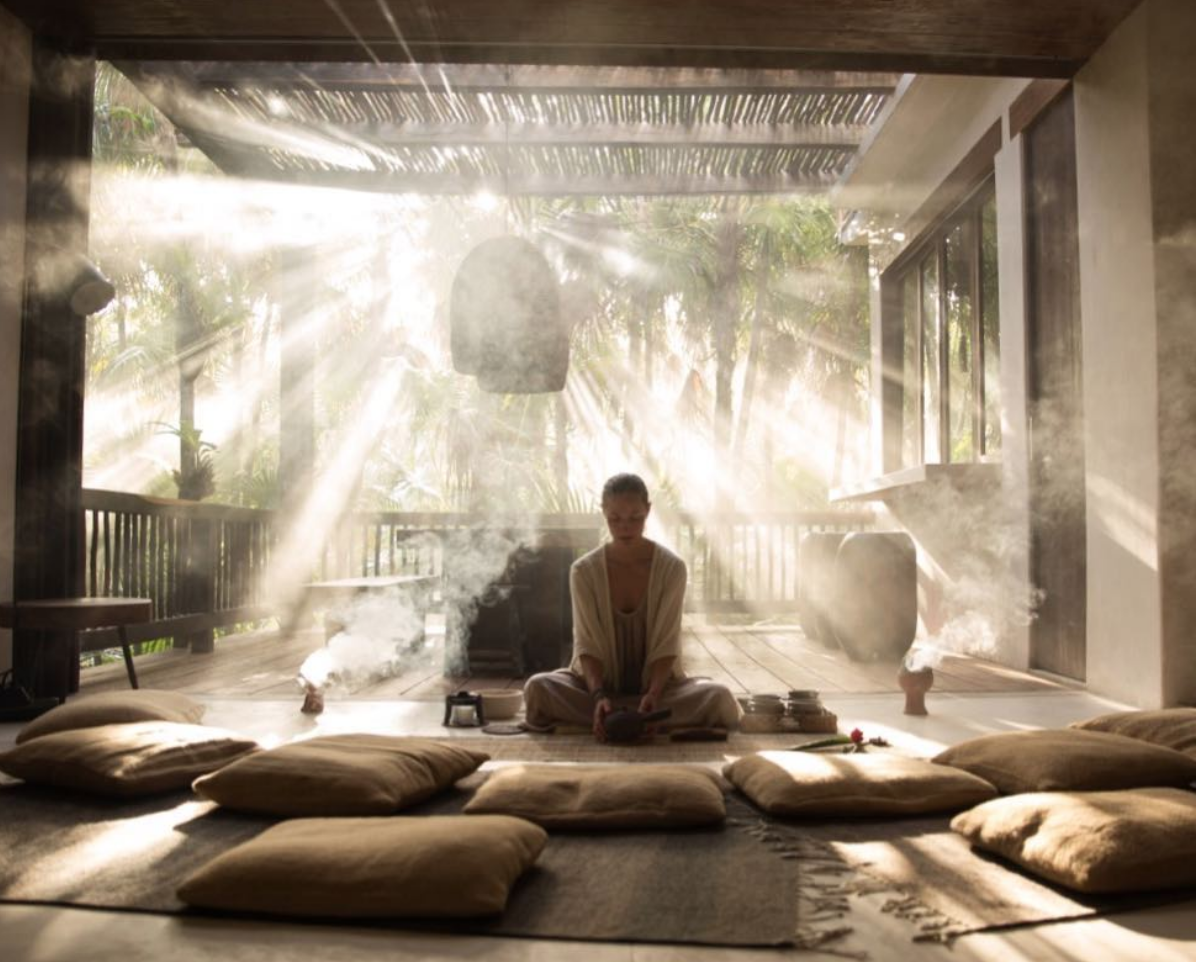
Bridging the Gap
Meditation is a fundamental Zen practice. We can’t overlook this, and it will find its way into any Chajin’s (person of tea) life.
However, though we work hard to remain focused and engaged during our meditations, we often slip during the other ~23 hours of the day.
There needs to be a bridge between strict seated meditation and the rest of our lives. This is where tea and Cha Dao shine.
Tea service and personal practice bridge the gap between the seated, silent meditations and the moving, active parts of our day.
It allows us to train our minds while in motion.
A useful mantra is that we are ‘always making tea’. All actions, all thoughts, all events will find their way back into our tea practice throughout the day, and this prompts us to remain present, to do one thing at a time, and to be fully involved in the process.
Zen emphasizes direct experience.
Direct experience of no-self, of the meditative mind, of satori or awakening experiences. There are some activities that are useful conduits to enable these states, and tea sits among the greatest of them.
There is a saying in Cha Dao, ‘Zen and Tea are one flavour’. There is no separation, no distinction necessary.
Zen is Tea.
Tea is Zen.
If you are looking to deepen your practice. If you are looking to convene directly with the non-dual state, you need to practice. It is not enough to read, to study, to know intellectually.
These are embodied experiences.
They demand the fullness of your being and the full involvement of your spirit and character.
John Vervaeke often refers to this a ‘participatory knowing’, I know it because I do it. I participate in the process of it. In this way I am not separate from it, but it and my being are enmeshed as one.
Inseparable. United.
In Eastern religions and schools of thought, direct participation is essential. It is not unreasonable to say that you can never understand the teachings until you have participated in the practices that stem from them.
Words and studies are limited.
They will always and only ever be the finger that points to the moon. They can never be the moon, they can never give you the complete experience of the moon. They only point the way, only highlighting the practices and vehicles you have to use to come into direct contact with the moon.
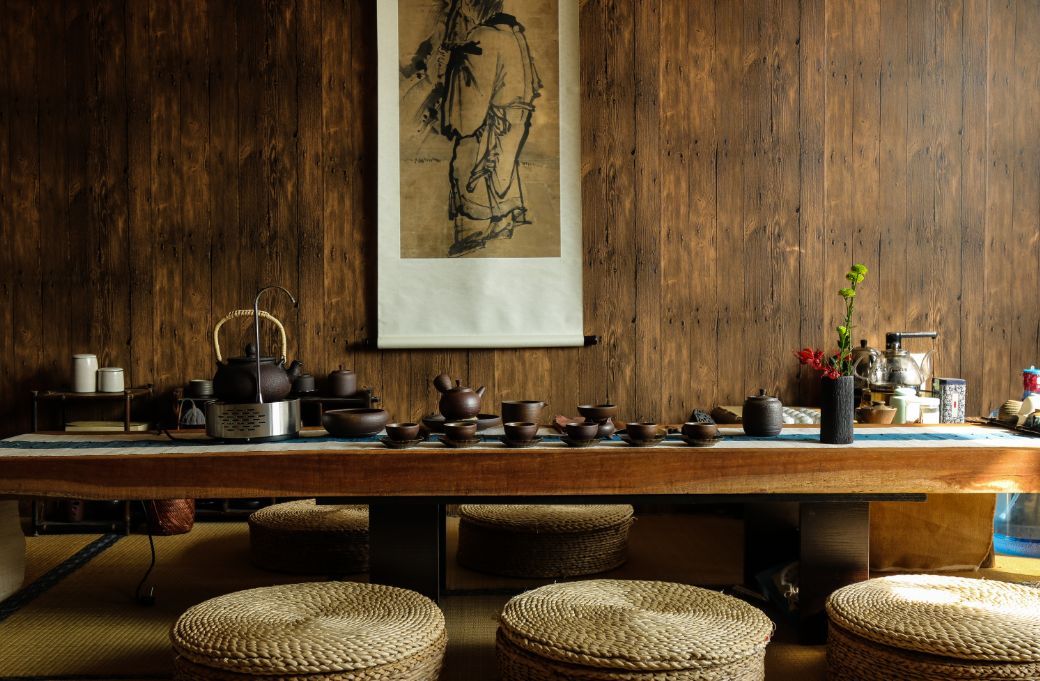
The Richness of Life
This is the secret of tea.
In each moment, in each bowl we drink, in each preparation and tea service we offer to others, we are present. We notice the uniqueness of each session, the fleeting moments, the rising steam.
The colour of the tea, the smell of the drink, the soft bubbling of the water in the kettle. These seemingly mundane moments burst open with living excitement. The world becomes rich, our hearts and bodies warm. There is a vitality that comes from this practice, of communing with and being supported by nature, and reciprocating this care with love, attention, and stewardship.
In a culture that grows bored of the brilliant world that we live in, these students of tea gather, sit, and serve.
This is but an introduction to Cha Dao, and these words will inevitably fail to convey the full profundity of the experience. Try it for yourself. Participate in the experience. Be present with your process.
If you’d like to learn more, I would highly recommend checking out Global Tea Hut. Or follow the #chadao tag on Instagram or elsewhere.
For the hungry, check out podcasts with Wu De, founder of Global Tea Hut and tea master.
There is a whole world waiting for you to rediscover.

Eric Brown
I'm a creator, artist, writer, and experience designer. I help people become themselves.

